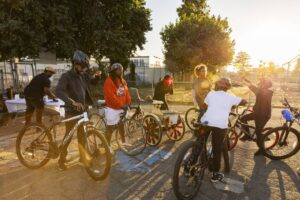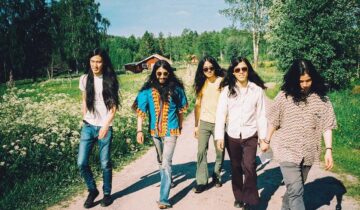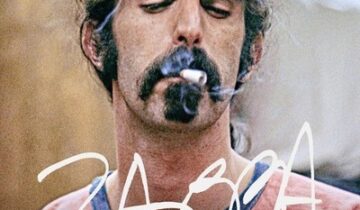Story by Gary Moskowitz for KQED, November 2 2023
Photo by Manuel Orbegozo for KQED
 At 5 p.m. on Halloween, as most Bay Area elementary school students were putting the finishing touches on costumes or plotting trick-or-treat routes, a group of 20 fourth- and fifth-graders were gathered in Oakland’s Arroyo Viejo Park for a different tradition: the 17th annual Scraper Bike Day, a yearly Halloween bike ride and party.
At 5 p.m. on Halloween, as most Bay Area elementary school students were putting the finishing touches on costumes or plotting trick-or-treat routes, a group of 20 fourth- and fifth-graders were gathered in Oakland’s Arroyo Viejo Park for a different tradition: the 17th annual Scraper Bike Day, a yearly Halloween bike ride and party.
Showing off bike rims and wheels they’d tricked out with aluminum foil and colorful duct tape, kids hung out, listened to music, grabbed Halloween candy, and had a chance to meet the Scraper Bike King himself: Tyrone “Champ” Stevenson Jr., who turned scraper bike culture into an expansive educational outreach program in East Oakland.
“You just look at these kids, and their eyes are really bright and all lit up, taking in all the information about scraper bikes and how to make a bike,” Stevenson says of the attendees, most of them participants in after-school programs that Stevenson helped organize at their Oakland public schools. “Kids are kids. They wanna be active, they want to ride and want to be a part of what we’re doing.”
Some of these kids aren’t too different from Stevenson when he was their age. He first began creating the bikes as a kid with his cousins and friends in his backyard in the early 2000s, as the hyphy movement was taking off: Stevenson had seen his cousin put aluminum foil on the wheels of his orange Diamondback BMX bike, he recalls, and he was immediately into it. He had some leftover spray paint from a school project, and bought some aluminum foil to get to work transforming his bike into something similar to his cousin’s bike.
“It was a part of that time, with scraper cars, when everybody was moving, and being active,” Stevenson says, referring to the large, chrome-rimmed cars that were popular in East Oakland at the time. “I wanted to be a part of that, it was different and unique. Scraper bikes looked like cars and I wanted a car, so the second-best thing was a bike.”
The bikes soon became a quintessential Oakland culture all their own. In 2007, when he was 17, he appeared in the Trunk Boiz video for “Scraper Bike,” which quickly went viral with more than 3,000,000 views.
The classic Champ approach to scraper biking remains the same: spray-paint the frame and rims orange and blue — classic Golden State Warriors colors — and wrap brightly-colored duct tape and tinfoil around the spokes to make the wheels look like sunbeams. Then mount speakers on the bike so every ride has a Bay Area hip-hop soundtrack: Too Short, Sage The Gemini, Mac Dre and Tupac.
But a lot has happened since those early days. Stevenson is now 34 years old, and scraper bike culture has defined more than half his life. Scraper bikes are not just a casual pastime — they are his life’s work.
After seeing what bikes could do for the community, he first began working with kids in 2007; the Scraper Bike Team officially became a 501(c)(3) nonprofit in 2014, complete with an oversight board that includes local transit and environmental officials. In the years since, Stevenson has worked with community organizers and city and school officials to repurpose storage units as bike sheds and provide after-school programs at local libraries and schools, teaching bike safety, how to fix flat tires using patch kits, bike customization and the history of the scraper bike movement.
Stevenson and his staff also take kids on bike trips to Martin Luther King, Jr. Regional Shoreline in Oakland to talk about minimizing their carbon footprint, recycling, health and safety and protecting outdoor spaces. The pandemic threw a wrench in the program’s growth, but with grant funding and ongoing collaborations with the city, Stevenson hopes to ramp the programs back up to full speed in 2024.
The year 2020 was big for the Scraper Bike Team in other ways, however. That’s when they worked with Oakland’s Department of Transportation to establish Scraper Bike Way, a center-running bike lane from 90th and International to MacArthur, all custom designed by the scraper bike team. Street signs along the sidewalk read “Scraper Bike Way,” and scraper bike designs fill the bright orange lane.
“The Scraper Bike team helps show people that biking is safe for them to do: they model it, and that’s important in East Oakland,” says Brytanee Brown, an Oakland urban planner who was with the Department of Transportation in 2020, and worked with the team on the lane. The collaboration has continued to flourish: Brown and Stevenson were both organizers of the East Oakland Futures Festival this past June, which aimed to highlight mobility as well as food sovereignty and youth activism.
“We’re invested in making people feel safe here, and we’re just beginning to scratch the service with transportation equity here,” adds Brown. “Mobility is a tool for freedom, not to be taken lightly. It’s a radical act. We envision a future involving food, culture and mobility where Black people and people of color thrive.”
In 2024, Stevenson plans to unveil new community bike sheds and landscaping at Arroyo Viejo park and the Martin Luther King, Jr. branch of the Oakland Public Library, where local youth will gather to work on bikes and decorate them.
“Eventually we want to have scraper bikes everywhere, and make sure every kid in Oakland has access to bike mechanics and bike workshops,” Stevenson says. “There are no bike shops deep in East Oakland, so folks have to rely on their own skills to fix bikes. We want to be on every corner, like McDonald’s, and take over public space.”
On top of all his community organizing and education work, Stevenson still finds time to make scraper bikes himself — some just to ride, and also some for display, like the ones he made recently for a “50 years of hip-hop” celebration in Oakland. Recently, he’s added some new music to his rides: Big Chris from Houston, BML, and Fireboy DML and other Afrobeat artists.
“I’m always working and progressing, trying to move things forward. I’m constantly moving and grinding,” Stevenson says. “It’s always been a life thing for me. It’s forever.”



